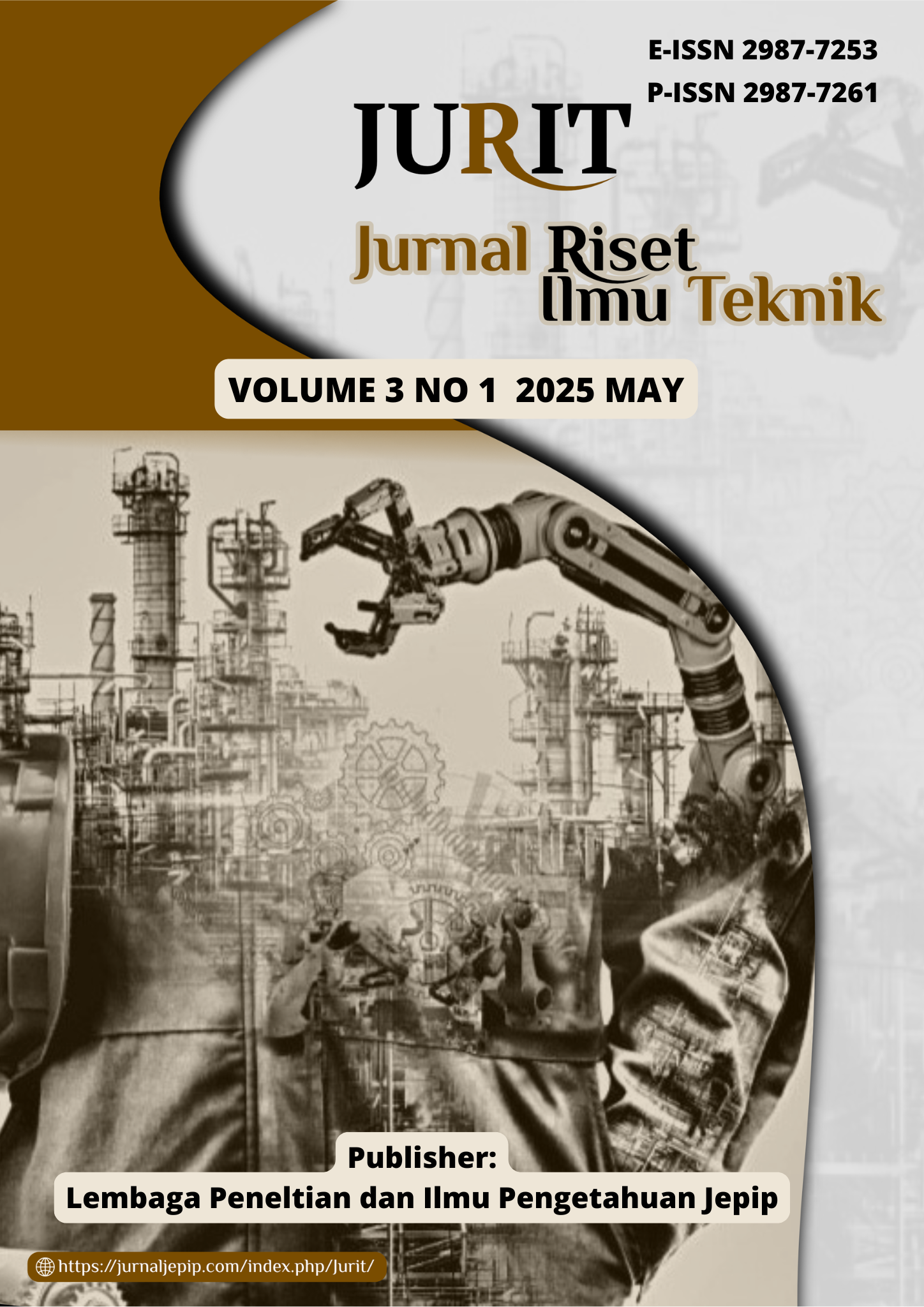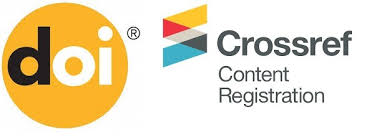Evaluating Based E-Learning Platforms In Nigerian Higher Education: An SEM-PLS Analysis Based On The Delone And Mclean Model
DOI:
https://doi.org/10.59976/jurit.v3i1.152Abstract
The Federal University of Technology Minna (FUT Minna) serves as the case study, representing a technology-focused institution facing post–COVID-19 challenges in digital education delivery. The research investigates how system quality, information quality, and service quality influence use, user satisfaction, and net benefits in an emerging economy context. A quantitative explanatory design was employed using Structural Equation Modeling–Partial Least Squares (SEM-PLS). Data were collected from 60 academic staff members through a structured questionnaire based on validated indicators of the DeLone and McLean model. The analysis was performed using SmartPLS 4.0, encompassing outer model validation (convergent validity, reliability) and inner model testing (path coefficients, R², f², and Q²). The results reveal that system quality and service quality significantly influence system use (t = 2.384, p = 0.018; t = 3.617, p = 0.000, respectively), while information quality exerts a weaker effect. User satisfaction emerged as a key mediator linking system quality to perceived net benefits (t = 3.124, p = 0.002). The model explained 26.8% of variance in use, 23.1% in user satisfaction, and 16.6% in net benefit, confirming moderate explanatory power. These findings highlight that e-learning success in Nigerian universities depends not only on technical reliability but also on continuous service responsiveness and user-centered support. The study suggests that higher education institutions in developing economies should prioritize improving system stability, standardizing instructional content, and strengthening technical support to enhance user satisfaction and learning outcomes. Institutional investment in digital literacy and feedback-driven service improvement can maximize the long-term benefits of e-learning systems. This study extends the application of the DeLone and McLean model to a Sub-Saharan African context, providing empirical evidence on e-learning adoption dynamics in resource-constrained environments. The integrated SEM-PLS approach offers a validated framework for assessing e-learning success and guiding strategic digital transformation in higher education.
References
J. M. Becker, “PLS-SEM’s most wanted guidance,” 2023. doi: 10.1108/IJCHM-04-2022-0474.
F. Magno, “The effects of chatbots’ attributes on customer relationships with brands: PLS-SEM and importance–performance map analysis,” TQM J., vol. 35, no. 5, pp. 1156–1169, 2023, doi: 10.1108/TQM-02-2022-0080.
P. Guenther, “Improving PLS-SEM use for business marketing research,” Ind. Mark. Manag., vol. 111, pp. 127–142, 2023, doi: 10.1016/j.indmarman.2023.03.010.
M. Sarstedt, “‘PLS-SEM: indeed a silver bullet’–retrospective observations and recent advances,” J. Mark. Theory Pract., vol. 31, no. 3, pp. 261–275, 2023, doi: 10.1080/10696679.2022.2056488.
P. N. Sharma, “Predictive model assessment and selection in composite-based modeling using PLS-SEM: extensions and guidelines for using CVPAT,” Eur. J. Mark., vol. 57, no. 6, pp. 1662–1677, 2023, doi: 10.1108/EJM-08-2020-0636.
B. Foroughi, “Determinants of Intention to Use ChatGPT for Educational Purposes: Findings from PLS-SEM and fsQCA,” Int. J. Hum. Comput. Interact., vol. 40, no. 17, pp. 4501–4520, 2024, doi: 10.1080/10447318.2023.2226495.
J. H. Cheah, “Multigroup analysis of more than two groups in PLS-SEM: A review, illustration, and recommendations,” J. Bus. Res., vol. 156, 2023, doi: 10.1016/j.jbusres.2022.113539.
A. E. Legate, “PLS-SEM: Prediction-oriented solutions for HRD researchers,” Hum. Resour. Dev. Q., vol. 34, no. 1, pp. 91–109, 2023, doi: 10.1002/hrdq.21466.
L. W. Wong, “Artificial intelligence-driven risk management for enhancing supply chain agility: A deep-learning-based dual-stage PLS-SEM-ANN analysis,” Int. J. Prod. Res., vol. 62, no. 15, pp. 5535–5555, 2024, doi: 10.1080/00207543.2022.2063089.
F. Magno, “A brief review of partial least squares structural equation modeling (PLS-SEM) use in quality management studies,” TQM J., vol. 36, no. 5, pp. 1242–1251, 2024, doi: 10.1108/TQM-06-2022-0197.
M. Alshurideh, “Predicting the actual use of m-learning systems: a comparative approach using PLS-SEM and machine learning algorithms,” Interact. Learn. Environ., vol. 31, no. 3, pp. 1214–1228, 2023, doi: 10.1080/10494820.2020.1826982.
O. J. Aburumman, “How to Deal with the Results of PLS-SEM?,” 2023. doi: 10.1007/978-3-031-08954-1_101.
M. P. Low, “Advancing on weighted PLS-SEM in examining the trust-based recommendation system in pioneering product promotion effectiveness,” Qual. Quant., vol. 57, pp. 607–636, 2023, doi: 10.1007/s11135-021-01147-1.
M. Sarstedt, “Advanced marketing analytics using partial least squares structural equation modeling (PLS-SEM),” 2024. doi: 10.1057/s41270-023-00279-7.
Y. Gamil, “Studying the relationship between causes and effects of poor communication in construction projects using PLS-SEM approach,” J. Facil. Manag., vol. 21, no. 1, pp. 102–148, 2023, doi: 10.1108/JFM-04-2021-0039.
N. F. Richter, “Elevating theoretical insight and predictive accuracy in business research: Combining PLS-SEM and selected machine learning algorithms,” J. Bus. Res., vol. 173, 2024, doi: 10.1016/j.jbusres.2023.114453.
S. Kono, “The potentials of partial least squares structural equation modeling (PLS-SEM) in leisure research,” J. Leis. Res., vol. 54, no. 3, pp. 309–329, 2023, doi: 10.1080/00222216.2022.2066492.
I. E. Salem, “Is eco-label hotel engagement the pathway to sustainability practices via entrepreneurial resilience and orientation in Oman? Findings from PLS-SEM and fsQCA,” Int. J. Contemp. Hosp. Manag., vol. 35, no. 2, pp. 717–742, 2023, doi: 10.1108/IJCHM-02-2022-0229.
K. M. Qureshi, “Analyzing Critical Success Factors of Lean 4.0 Implementation in Small and Medium Enterprises for Sustainable Manufacturing Supply Chain for Industry 4.0 Using PLS-SEM,” Sustain. Switz., vol. 15, no. 6, 2023, doi: 10.3390/su15065528.
A. Usakli, “Which SEM to use and what to report? A comparison of CB-SEM and PLS-SEM,” 2023. doi: 10.1108/978-1-80455-063-220231002.
N. F. Richter, “How to apply necessary condition analysis in PLS-SEM,” 2023. doi: 10.1007/978-3-031-37772-3_10.
S. Seyfi, “Can tourist engagement enhance tourist behavioural intentions? A combination of PLS-SEM and fsQCA approaches,” Tour. Recreat. Res., vol. 49, no. 1, pp. 63–74, 2024, doi: 10.1080/02508281.2021.1981092.
W. Kang, “The impact of voice assistants’ intelligent attributes on consumer well-being: Findings from PLS-SEM and fsQCA,” J. Retail. Consum. Serv., vol. 70, 2023, doi: 10.1016/j.jretconser.2022.103130.
S. Vaithilingam, “Robustness checks in PLS-SEM: A review of recent practices and recommendations for future applications in business research,” J. Bus. Res., vol. 173, 2024, doi: 10.1016/j.jbusres.2023.114465.
S. Hauff, “Importance and performance in PLS-SEM and NCA: Introducing the combined importance-performance map analysis (cIPMA),” J. Retail. Consum. Serv., vol. 78, 2024, doi: 10.1016/j.jretconser.2024.103723.
M. Al-Emran, “Determinants of Using AI-Based Chatbots for Knowledge Sharing: Evidence From PLS-SEM and Fuzzy Sets (fsQCA),” IEEE Trans. Eng. Manag., vol. 71, pp. 4985–4999, 2024, doi: 10.1109/TEM.2023.3237789.
E. C. X. Aw, “Be my friend! Cultivating parasocial relationships with social media influencers: findings from PLS-SEM and fsQCA,” Inf. Technol. People, vol. 36, no. 1, pp. 66–94, 2023, doi: 10.1108/ITP-07-2021-0548.
B. Foroughi, “Determinants of intention to use autonomous vehicles: Findings from PLS-SEM and ANFIS,” J. Retail. Consum. Serv., vol. 70, 2023, doi: 10.1016/j.jretconser.2022.103158.
A. Z. Abbasi, “Exploring tourism-generated social media communication, brand equity, satisfaction, and loyalty: A PLS-SEM-based multi-sequential approach,” J. Vacat. Mark., vol. 30, no. 1, pp. 93–109, 2024, doi: 10.1177/13567667221118651.
Y. Yan, “How IT affordances influence customer engagement in live streaming commerce? A dual-stage analysis of PLS-SEM and fsQCA,” J. Retail. Consum. Serv., vol. 74, 2023, doi: 10.1016/j.jretconser.2023.103390.
M. Sabol, “PLS-SEM in information systems: seizing the opportunity and marching ahead full speed to adopt methodological updates,” 2023. doi: 10.1108/IMDS-07-2023-0429.
Downloads
Published
How to Cite
Issue
Section
License
Copyright (c) 2025 Fadele Ayotunde Alaba, Nasiru Yakubu, Dokun Iwalewa Oluwajana, Adetokunbo Babafemi, Oluchi Adewale

This work is licensed under a Creative Commons Attribution 4.0 International License.





















